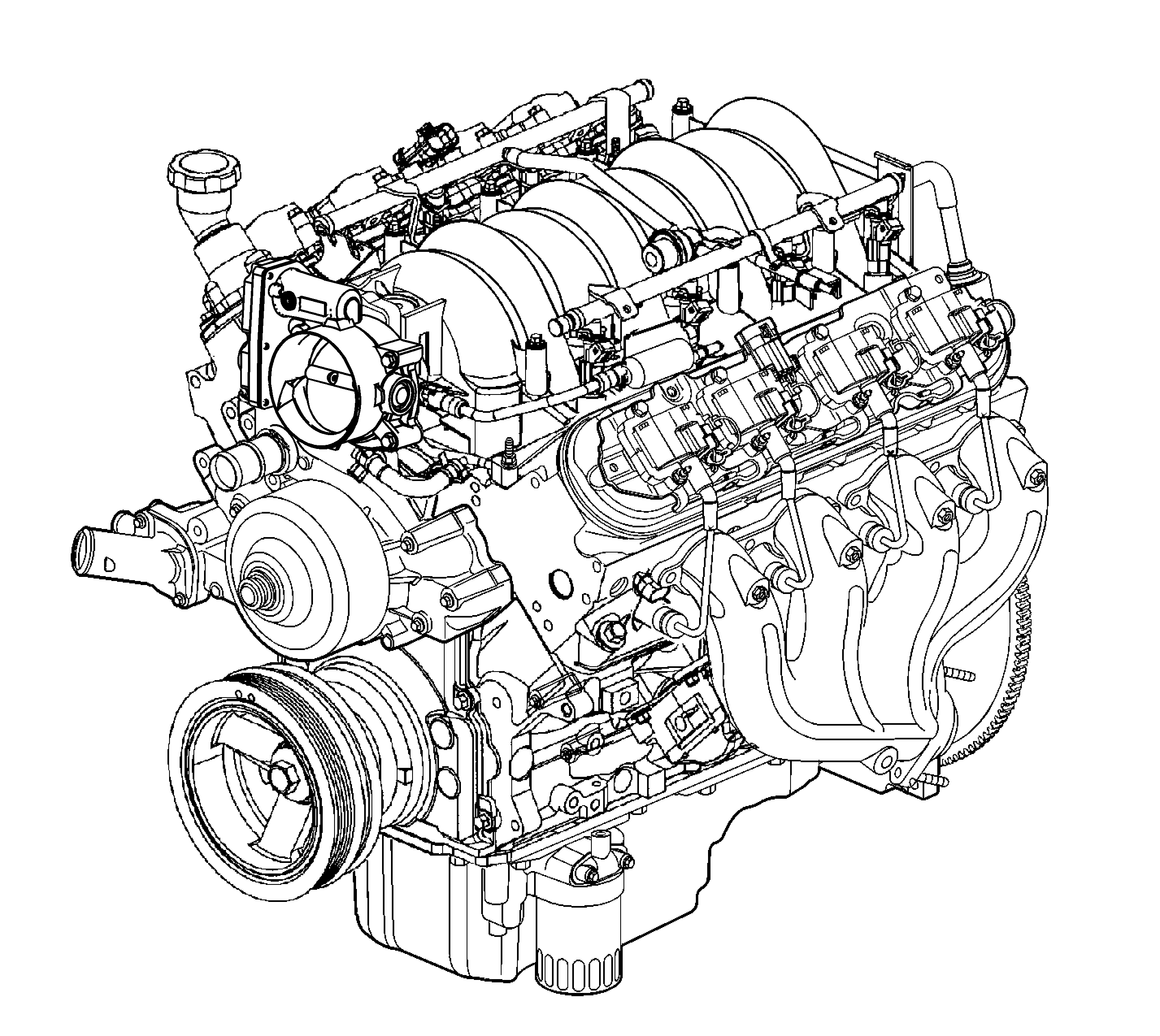The 5.7 Liter LS1 V8

The 5.7 Liter V8 engine is identified as RPO LS1 and VIN G.
Camshaft and Drive System
A billet steel one piece camshaft is supported by five bearings pressed into the engine block. The camshaft has a machined camshaft sensor reluctor ring incorporated between the fourth and fifth bearing journals. The camshaft timing sprocket is mounted to the front of the camshaft and is driven by the crankshaft sprocket through the camshaft timing chain. The crankshaft sprocket is splined and drives the oil pump driven gear. A retaining plate mounted to the front of the engine block maintains camshaft location.
Crankshaft
The crankshaft is cast nodular iron. The crankshaft is supported by five crankshaft bearings. The bearings are retained by crankshaft bearing caps which are machined with the engine block for the proper alignment and clearance. The crankshaft journals are undercut and rolled. The center main journal is the thrust journal. A crankshaft position reluctor ring is mounted at the rear of the crankshaft. The reluctor ring is not serviceable separately.
Cylinder Heads
The cylinder head assemblies are cast aluminum and have pressed in place powdered metal valve guides and valve seats. Passages for the engine coolant air bleed system are at the front of each cylinder head. There are no exhaust gas passages within the cylinder head. Valve rocker arm covers are retained to the cylinder heads by four center mounted rocker arm cover bolts.
Engine Block
The engine block is a cam-in-block deep skirt 90 degree V configuration with five crankshaft bearing caps. The engine block is aluminum with cast in place iron cylinder bore liners. The five crankshaft bearing caps each have four vertical M10 and two horizontal M8 mounting bolts. The camshaft is supported by five camshaft bearings pressed into the block.
Exhaust Manifolds
The exhaust manifolds are a one piece cast iron design. The exhaust manifolds direct exhaust gasses from the combustion chambers to the exhaust system. Each manifold has an externally mounted stamped steel heat shield that is retained by bolts.
Intake Manifold
The integrated air fuel module (IAFM) is a one piece composite design that incorporates metal and/or brass threaded inserts for mounting the fuel rail, drive-by-wire and throttle body. The intake manifold is sealed to the cylinder heads by eight separate non-reusable silicone sealing gaskets which press into the grooves of the intake housing. The drive-by-wire throttle body assembly bolts to the front of the intake manifold. The throttle body is sealed to the intake manifold by a one piece push in place silicone gasket. The fuel rail assembly with eight separate fuel injectors is retained to the intake by four bolts. The injectors are seated in their individual manifold bores with O-ring seals to provide sealing. A fuel rail stop bracket is retained at the rear of the left fuel rail by the intake manifold mounting bolts. A snap fit manifold absolute pressure (MAP) sensor housing is mounted at the rear of the manifold and sealed by an O-ring seal. The MAP sensor is installed and retained to the MAP sensor housing. There are no coolant passages within the intake manifold.
Oil Pan
The structural oil pan is cast aluminum. Incorporated into the design are the oil filter mounting boss, drain plug opening, oil level indicator tube opening, and oil pan baffle. An internal tube assembly directs pressurized oil from the engine block to the oil filter, mounted in the left front area of the pan. Filtered oil is then returned to the engine block through the tube assembly into the engine block oil galleries. The oil pan transfer cover is mounted to the left front area of the oil pan. The alignment of the structural oil pan to the rear of the engine block and transmission bell housing is critical.
Piston and Connecting Rod Assemblies
The pistons are cast aluminum. The pistons use two compression rings and one oil control ring assembly. The piston is a low friction, lightweight design with a flat top and barrel shaped skirt. The piston pins are chromium steel and are a full-floating design. The connecting rods are powdered metal. The connecting rods are fractured at the connecting rod journal and then machined for the proper clearance. 2005 applications use a piston with a graphite coated skirt. The piston and pin are to be serviced as an assembly.
Valve Rocker Arm Cover Assemblies
The valve rocker arm covers are cast aluminum and use a pre-molded silicone gasket for sealing. Mounted to each rocker cover is an ignition coil and bracket assembly. Incorporated into the covers are the oil fill tube and the engine fresh air passages. The rocker arm covers are retained to the cylinder heads by four center mounted rocker cover bolts.
Valve Train
Motion is transmitted from the camshaft through the hydraulic roller valve lifters and tubular pushrods to the roller type rocker arms. The nylon valve lifter guides position and retain the valve lifters. The valve rocker arms for each bank of cylinders are mounted on pedestals, pivot supports. Each rocker arm is retained on the pivot support and cylinder head by a bolt. Valve lash is net build.
